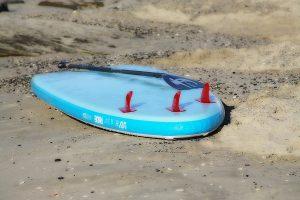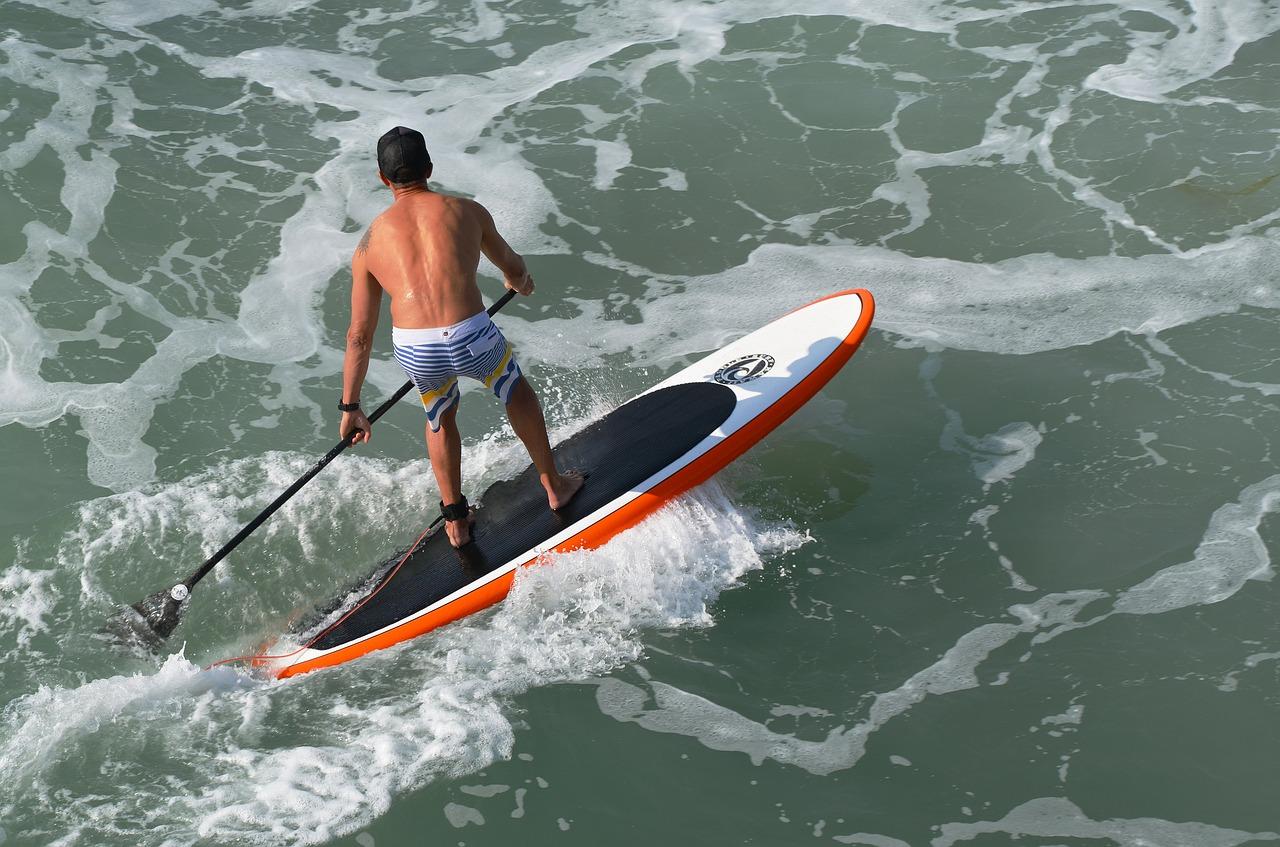A few of your friends have invited you out on the lake for the weekend. They’ve told you to bring an inflatable stand-up paddle board along so you can relax on the water. The problem here is, not only do you not have a board, you don’t even know what it is.
How are you supposed to shop for one? There is a lot to consider when you’re looking around. The main thing is the hull type, volume, weight capacity, length, and width of the board.
To help shine a light on what all of this means so you can pick up the best inflatable stand up paddle board for you, here is a quick buying guide.
1. Hull Types
The hull is the body of the board. The main two hull types are the planing hull and the displacement hull. Which one you chose all depends on how you want the board to perform and what activities you want to do on it.
Planing Hull
The planing hull is flat as your standard surfboard. It’s designed to glide on top of the water like a surfboard as well.
It’s going to be your hull of choice if you’re planning to surf, do some leisurely paddling, or do a little SUP yoga.
Displacement Hull
Displacement hulls are built more like a canoe. It goes through the water rather than on top. You won’t have to put as much effort into paddling it that you do with a planing hull board and you’ll be able to cover more water at a faster rate. The only catch is that they are harder to maneuver than a planing hull board.
You’ll pick this one up if you’re going to do some fitness paddling, race, or participate in SUP camping and touring.
2. Volume and Weight Capacity
You want your board to be able to support you. If it can’t, it won’t feel stable and it won’t be able to perform the way that it should. To this end, you need to consider the weight capacity that the board can hold and the volume.
Volume
Volume is the measure of the board’s ability to float on the water when there is weight applied to it. The higher the board’s volume, the more weight it can hold.
Weight Capacity
Every board has a certain amount of weight that it can hold. If you get a board that you’re too heavy for then it will dip down too low in the water and you won’t be able to use it correctly.
When you’re deciding on how much weight you’ll be adding to the board make sure to also factor in any water, food, and gear that you will be bringing along with you.
3. Length
The length of the board also is a deciding factor in how it will handle on the water. For example, short boards are usually slower but easier to maneuver and longboards while harder to maneuver, are faster.
Short Board
The majority of shortboards have a planing hull. These boards are easy to maneuver and most of the time are used for surfing. They’re also the perfect length for children to use.
Medium Board
If you want a shortboard but you’re a little bit taller than a kid, then perhaps you should go with a medium board. Most of the time these have a planing hull as well but every once in a while you’ll find one with a displacement hull.
These boards are perfect for any use under the sun and are great if you’re planning to do some SUP yoga.
Long Board
Most longboards come in displacement hull types. This makes them good for traveling long distances and touring. They are a lot faster than medium and shortboards but you’ll have a harder time trying to maneuver them around the water.
4. Width
The last thing that you need to consider is the width. While width can make you feel more stable on your board if it’s too wide for you it will become hard for you to paddle. When you’re considering the width think of the type of paddling you’ll be doing, your body type, and your ability level.
Type of Paddling
If you’re going to be doing an activity that requires you to bring a bunch of extra gear with you, a wide board is going to be the best idea. There will be more space for you and your stuff to fit comfortably. If you’re going to be racing or surfing than a narrow board is going to be better because it’s faster and maneuverable.
Body Type
Think about your body type. If you’re a smaller person you will be able to hold your balance better on a narrow board vs. a larger person who may struggle with it. Also, if you’re smaller and on a wide board, it makes paddling awkward.
Ability Level
If you’ve done a lot of paddling in your day you may be fine with a narrow board but for those who aren’t so experienced, it could cause you to be a bit nervous. If you’re a newbie then a wide board will allow you to feel safe and more stable.
How to Pick the Best Inflatable Stand Up Paddle Board for You
 If your friends have invited you out on the lake for the weekend you’ll need to pick out an inflatable stand up paddle board to have fun in the water with everyone else. There are a lot of options available but if you use this buying guide you’re sure to find the best one for you.
If your friends have invited you out on the lake for the weekend you’ll need to pick out an inflatable stand up paddle board to have fun in the water with everyone else. There are a lot of options available but if you use this buying guide you’re sure to find the best one for you.
You’re going to need paddles to go with that board. Check out our review to find the best one.

